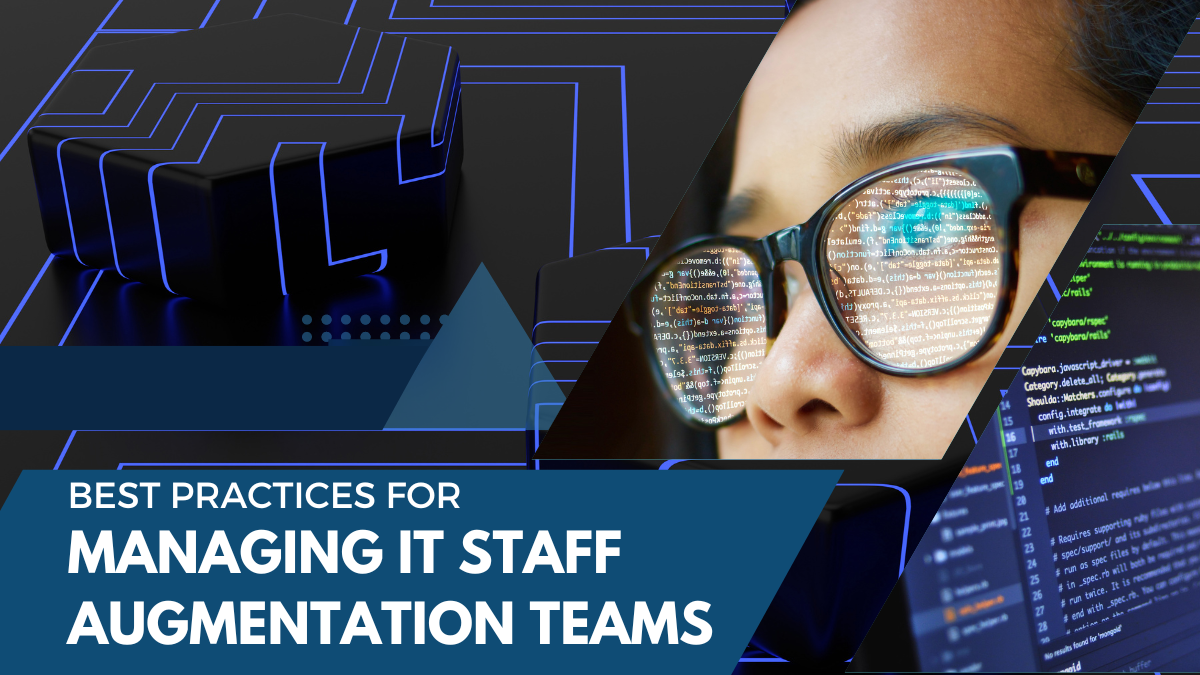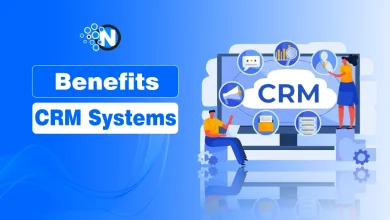
Managing IT staff augmentation teams can be complex, especially when dealing with multiple projects simultaneously. A right approach ensures it is feasible to create a seamless workflow and maximize your team’s productivity.
Importance of IT Staff Augmentation Teams
Businesses must stay agile and adapt immediately to market demands in today’s rapidly changing business environment. One way to achieve this is by using IT staff augmentation, which allows companies to add qualified personnel to their teams for a specific project or period. However, managing IT staff augmentation services and teams can be challenging, requiring careful planning, communication, and collaboration.
This article will explore some of the best practices for managing IT staff augmentation teams for business projects.
What is IT Staff Augmentation?
IT staff augmentation is when companies hire external IT professionals to supplement their existing teams for a specific project or period. This is a great, flexible and cost-effective way to add specialized skills to a team without spending business money and time of recruiting and training new employees. IT staff augmentation is commonly used in software development, web design, cybersecurity, and other IT-related fields.
Benefits of IT Staff Augmentation for Business Projects
There are several benefits of using IT staff augmentation for business projects:
Access to specialized skills: IT staff augmentation allows companies to hire IT professionals with technical skills that may be available in various ways.
Flexibility: Companies can hire IT staff augmentation teams for a specific project or period, allowing them to scale their teams up or down as needed.
Cost-effectiveness: IT staff augmentation is often more cost-effective than hiring new employees, as companies only pay for the services they need.
Faster time-to-market: IT staff augmentation allows companies to complete projects faster by adding qualified professionals to their teams.

Challenges in Managing IT Staff Augmentation Teams
While IT staff augmentation offers many benefits, managing an external team can be challenging. Some of the common challenges include:
Communication: Communication is crucial in managing IT staff augmentation teams, and miscommunication can lead to delays and errors.
Coordination: Developing an effective coordination between in-house and remote teams can be challenging. But making them all work together effectively to reach business goals is important.
Performance management: Managing performance of remote team members can be difficult, as they may have a different level of interest in the project than internal team members.
Cultural differences: IT staff augmentation teams may come from different cultures and may have different work styles, which can lead to misunderstandings and conflicts.
Best Practices for Managing IT Staff Augmentation Teams
To overcome these challenges and maximize the productivity of IT staff augmentation teams, companies should follow these best practices:
1. Define Clear Objectives and Expectations
Before starting a project, companies should define clear objectives and expectations for the IT staff augmentation team. To define project objectives and expectations, you must have a project outline and deliverables on hand. In this way, you will have everyone on the same page and working towards the same goals.
2. Build Strong Communication Channels
Effective communication is crucial in managing IT staff augmentation teams. Companies should establish clear communication channels, such as regular team meetings, email updates, and project management tools, to ensure everyone is informed about project progress and changes. It’s also essential to establish a point of contact for the external team members to address any issues or concerns.
3. Establish Efficient Project Management Processes
Companies should establish efficient project management processes that enable effective collaboration between internal and external team members. This includes defining the project scope, setting up project milestones, and identifying potential risks and obstacles.
Spending business money on a reliable project management tool that allows team members to track progress, assign tasks, and communicate effectively is also important. Such tools make project management a lot easier and more efficient.
4. Conduct Regular Performance Evaluations
To make sure that the IT staff augmentation team is performing effectively, it’s essential to conduct regular performance evaluations. This includes monitoring team progress, providing feedback, and identifying areas for improvement. Companies can ensure that the team meets project goals and delivers high-quality results by regularly evaluating performance.
5. Foster a Collaborative Work Environment
Businesses of all types should create a culture of teamwork and inclusivity to promote collaboration and ensure a positive work environment. This includes encouraging open communication, recognizing team member achievements, and promoting shared project ownership.
Developing a collaborative and effective work environment can help businesses ensure everyone works together effectively and efficiently. In such work environments, team members are also motivated to work determinedly toward assigned tasks and jobs.
6. Invest in Employee Training and Development
Companies should invest in employee training and development to maximize the value of IT staff augmentation. This includes providing opportunities for skill development, such as training sessions and mentorship programs.
Investing in employee training and development enables companies to make sure that the IT staff augmentation team is up-to-date with the latest technologies and practices. Employee training also allows team members to stay on top of industry trends and updates.
7. Manage Expectations with Stakeholders
When managing IT staff augmentation teams, it is important to manage expectations with stakeholders, such as senior management or clients, to ensure they understand what the IT staff augmentation team can and cannot deliver.
Companies should clearly communicate the scope of the project and any necessary limitations, as well as the team’s progress and achievements with stockholders. It will help avoid misunderstandings and maintain a positive relationship with stakeholders while delivering quality services
Conclusion
Managing IT staff augmentation teams can be challenging, but by following these best practices, companies can ensure that their teams are productive, efficient, and delivering high-quality results. By defining clear objectives and expectations, building strong communication channels, establishing efficient project management processes, conducting regular performance evaluations, fostering a collaborative work environment, and investing in employee training and development, companies can maximize the value of IT staff augmentation for their business projects.
However, it is also important to select qualified team members and provide them with the necessary training, support, and resources to enable them to perform at their best.




